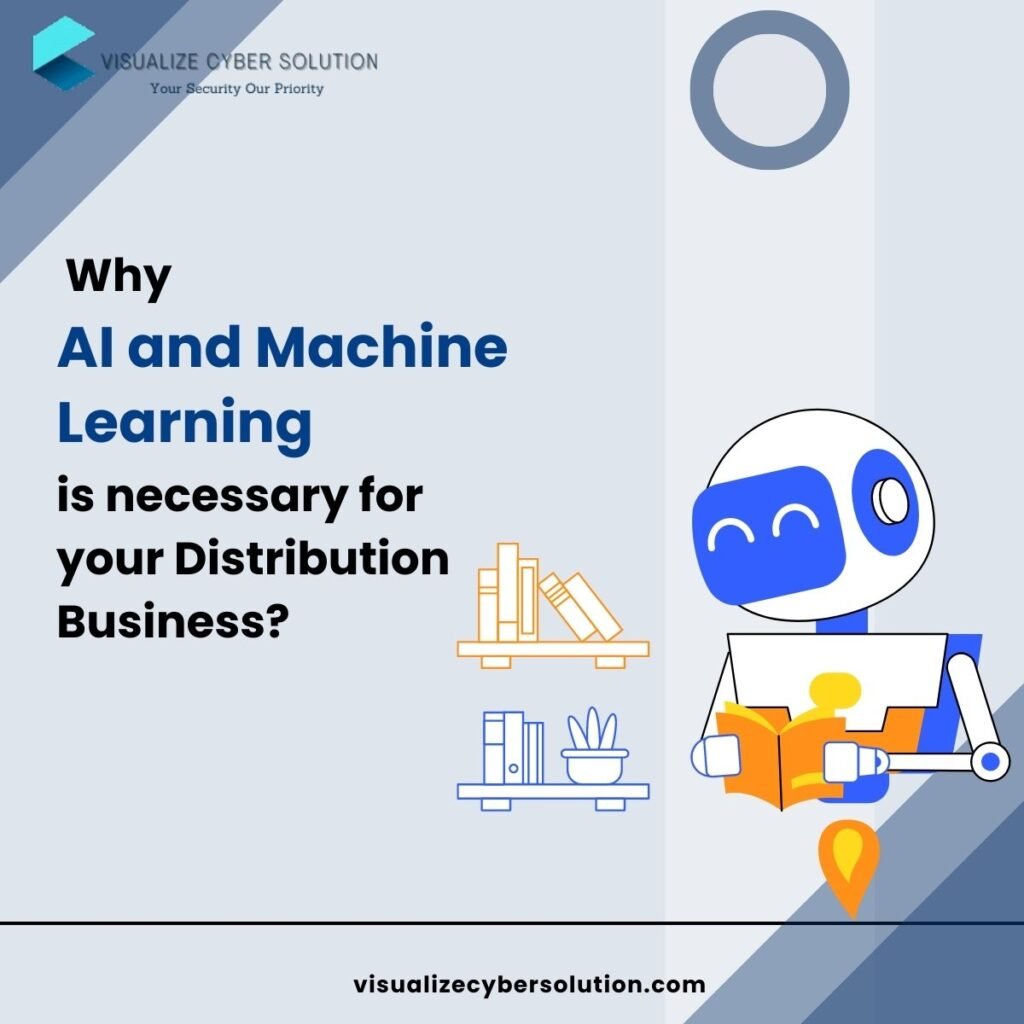
Transforming Distribution Businesses: The Crucial Role of AI and Machine Learning by Visualize Cyber Solutions
In the rapidly evolving world of distribution, embracing technological advancements is no longer a choice—it’s a necessity. Artificial Intelligence (AI) and Machine Learning (ML) have emerged as powerful tools that are reshaping the distribution landscape. From optimizing supply chains to improving customer experiences, AI and ML offer distribution businesses the potential to achieve unparalleled efficiency and growth. In this blog, we’ll explore why AI and ML are indispensable for distribution businesses and how they’re driving innovation.
1. Demand Forecasting Precision
Accurate demand forecasting is critical for distribution businesses to maintain optimal inventory levels. AI and ML algorithms analyze historical sales data, market trends, and external factors to predict demand with remarkable accuracy. This ensures businesses can stock the right products in the right quantities, reducing excess inventory and avoiding stockouts.
2. Efficient Supply Chain Management
AI and ML optimize supply chain operations by analyzing vast amounts of data related to suppliers, transportation, and inventory. These technologies identify bottlenecks, streamline processes, and help businesses make informed decisions about sourcing, production, and distribution, ultimately leading to cost savings and improved efficiency.
3. Dynamic Route Optimization
The logistics aspect of distribution can be complex, but AI and ML simplify it by considering variables such as traffic, weather, delivery windows, and vehicle capacity. These technologies create optimal delivery routes that save time, fuel, and resources, leading to reduced operating costs and faster order deliveries.
4. Enhanced Customer Experiences
AI and ML enable distribution businesses to provide personalized customer experiences. By analyzing customer data, preferences, and purchase history, these technologies allow businesses to offer tailored recommendations, promotions, and services, fostering deeper customer engagement and loyalty.
5. Predictive Maintenance
In distribution, machinery and equipment play a vital role. AI and ML algorithms can predict equipment failures by analyzing data from sensors and historical maintenance records. This predictive maintenance approach minimizes downtime, reduces maintenance costs, and ensures continuous operations.
6. Real-time Inventory Management
AI-powered sensors and ML algorithms enable real-time tracking of inventory levels. This information is invaluable for monitoring stock levels, detecting discrepancies, and automatically triggering reorders when inventory drops below predefined thresholds.
7. Data-Driven Decision Making
AI and ML empower distribution businesses to make data-driven decisions. By analyzing data from various sources, including sales, inventory, and customer interactions, these technologies provide actionable insights that guide business strategies and help identify new opportunities.
In conclusion, AI and Machine Learning are reshaping the distribution landscape, offering unprecedented opportunities for efficiency, growth, and innovation. From demand forecasting to real-time inventory management and dynamic route optimization, these technologies are propelling distribution businesses into the future. By embracing AI and ML, distribution businesses can position themselves at the forefront of industry transformation, driving success in an increasingly competitive and technologically driven market.
#AIInDistribution #MachineLearningLogistics #SmartSupplyChain #DataDrivenOperations #EfficientDistribution #TechInLogistics #AIForDemandForecasting #OptimizeDeliveryRoutes #PredictiveMaintenance #VisualizeCyberSolutions #LifeatVCS


